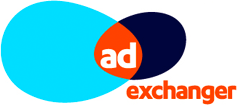Google expands data profiling with new DMP, for 1st and 3rd party info targeting

Answering Your Questions About Google’s Forthcoming DMP
by Zach Rodgers (link is external) // Friday, April 24th, 2015 – 3:53 pm
On Wednesday, Adweek’s Garrett Sloane reported (link is external) that Google is finally, officially (no, really) closing the last big gap in its ad tech stack. That is to say, it’s coming to market with a data-management platform (DMP).
Called DoubleClick Audience Center (DAC), the product will allow advertisers to create audience segments using their first-party data along with data from third parties. In the wake of Sloane’s story, AdExchanger did some calling around, and we’ve pieced together what DAC’s strengths and weaknesses are likely to be and how quickly Google is bringing it to market.
What follows comes from people with direct knowledge of Google’s road map, as well as some folks outside the company (including competitors) who have first- and secondhand knowledge. Google has confirmed the existence of the product, but is offering few concrete details as of yet.
What is it?
DAC performs all the functions of a standard DMP, i.e., it lets marketers bring to bear their CRM database, website audience data and other first-party data in combination with data from third parties. These data sets can then be used to build audience segments, and to push those segments into campaigns that run across supply sources.
What’s the differentiator?
This is an easy one. For existing DoubleClick clients, the big value proposition is the promise of a DMP that’s natively integrated with Google’s DSP DoubleClick Bid Manager and its ad management product, DoubleClick for Advertisers.
That tight integration comes with benefits such as smoother workflow, quicker activation of data segments and closed-loop analytics.
Additionally, DAC appears to perform well with third-party data overlays.
Is it a standalone product?
This is a big question. Is Google only launching a DMP so that marketers already invested in its DoubleClick suite can manage audiences in the same hub? Or will it plug into outside platforms?
A source with direct knowledge of the product says DAC will absolutely function as a standalone capable of plugging into outside DSPs such as MediaMath, Turn or DataXu.
Two others aren’t so sure. They believe, based on early accounts, that the primary early use case is for the existing DoubleClick customer.
“My take is it’s less of a pure DMP play and more of a connecting the pipes both internally and externally,” said one senior executive at a DSP company.
What are the weak points?
The key vulnerability for Google is that marketers and agencies may balk at the prospect of uploading their precious customer data to Google’s platform. It’s the same issue Facebook faces as it aims to position Atlas as a cross-device audience management platform.
From a features standpoint, DAC may have a shortcoming when it comes to granular analytics, such as tracking consumer journeys and attributing conversions. DAC is not providing that functionality out of the gate. (Google acquired attribution platform Adometry last year, but the technology has been housed within Google Analytics, not DoubleClick. More granular conversion attribution in DoubleClick may be on the way.)
Finally, DAC’s segment-building capabilities appear to be relatively rudimentary, according to a source.
At what stage is Google with the rollout of DAC?
While officially still in a private beta, Google appears to be ramping up sales quickly. A senior source at a major DMP says many of his customers have been pitched in recent weeks.
What took so long?
Google has talked internally about launching a DMP for close to six years, but has held back for various reasons. Its biggest concern and hesitation has been around user privacy, since a DMP by its nature mingles a range of consumer information.
The flip side of that privacy coin is regulation. US and European regulators keep a close eye on Google’s moves.
According to one person, the absence of a DMP was more strongly felt after Google unveiled its full-stack offering – Doubleclick Digital Marketing – consisting of all its ad tech components for the buy side. But that was three years ago.
So, why now?
The two biggest factors in the timing appear to be (1) the emergence of Oracle as a strong data-management contender, through the acquisitions of BlueKai and Datalogix in 2014, and (2) the rise of Facebook as a competitor with strong cross-device data tied to user logins.
“They’re worried about Facebook leaning too far forward and using Atlas as the all-in-one center for controlling data,” speculated one source. “Facebook obviously has a stronger audience position out of the gate with its registered users than Google does.”
Will it support cross-device identity?
No word on this yet. One source said that in several early briefings, cross-device functionality was not part of the pitch.
http://adexchanger.com/data-exchanges/answering-your-questions-about-goo… (link is external)


